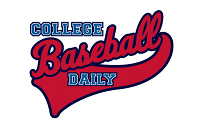Picture it: it’s a decade from now, and two baseball teams have endured nine suffocating innings and the game still stands at a draw. The coach is deep in contemplation: his team is in the middle of a homestand, and one of his pitchers won’t be playing for the season thanks to having to undergo Tommy John surgery. If this game goes too deep into the extra innings, he runs the risk of wearing out pitchers that he will need to call on in the upcoming games.
Ronald Blum, of CBC Sports, maintains that Major League Baseball will test during spring training and the All-Star Game a rule created not only to help out coaches in situations like these, but also to make sure that baseball games finish more quickly:
Should a baseball game go into extra innings, a runner would be placed on the second base as the inning began. A properly-executed bunt and a single can bring the game to an end with only one extra inning undergone, and this would be very convenient for the coaches and managers.
The Fans are an Issue
Unfortunately, there is a fine line between making games faster and changing the game itself. The New York Times’ Victor Mather describes a degree of disdain among many MLB fans regarding this idea, and these may well be found searching for NRL betting tips instead of baseball wagering info if the plan goes into effect!
These fans tend to take a certain amount of pride in that baseball is the one and only pro sport that doesn’t get played to a clock, for one, and at number two, to them it seems unfair to give teams a runner they have not earned on second base.
The Argument for the Experiment
At the competition’s highest level, each team has an array of minor league squads from which they are able to draw more players from. Additionally, the trade deadline for the MLB is not until the 31st of July, and teams are still able to swap for players eligible for postseason until the 21st of August, with waivers. There are many opportunities for these teams.
The rule may also work very well at college-level baseball: if a pitcher at MIssissippi State, for example, gets injured, Gary Henderson, as head coach, does not have the option to trade with another SEC team to get another player in. Another problem at this level is that most of the players are not yet superstars with million dollar contracts just yet, and their sports performance may not quite be on par.
The NCAA is the testing ground for these players, a trial-by-fire which will eliminate all but the best. Because this level has no fallback, if a pitcher’s arm blows out, his path to success becomes that much more difficult than it would be for a player already established at the major league level.
The same risks are being taken by college-level baseball players. It may well become clear that baseball loses a little luster when players are able to get placed in possible scoring positions for free. However, at the college-level, this rule would significantly reduce the pressure on coaches and pitchers and may well be worth a shot.
